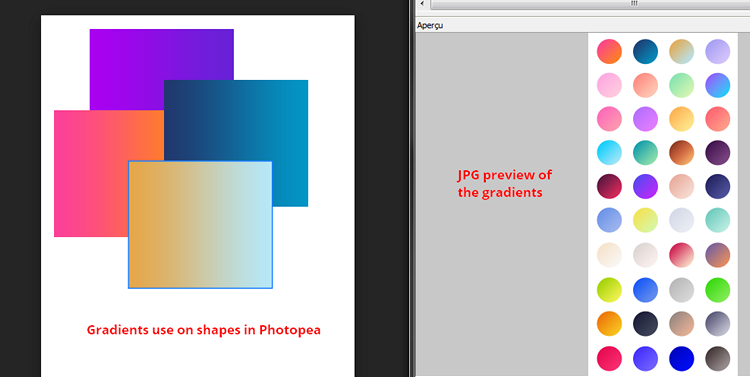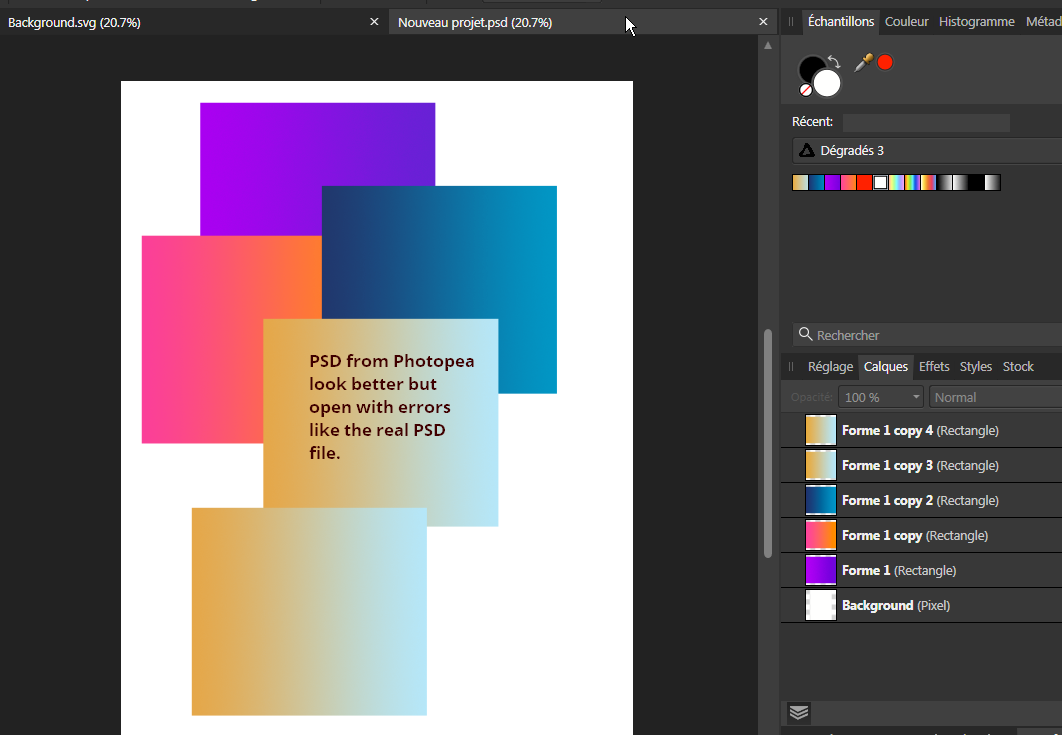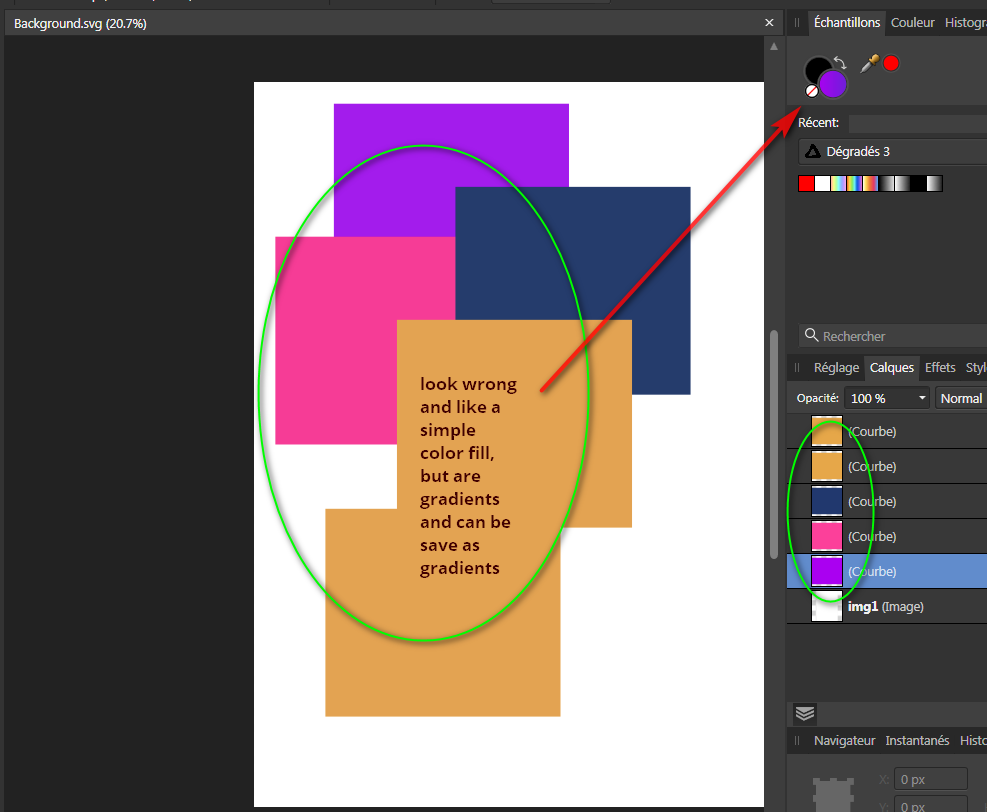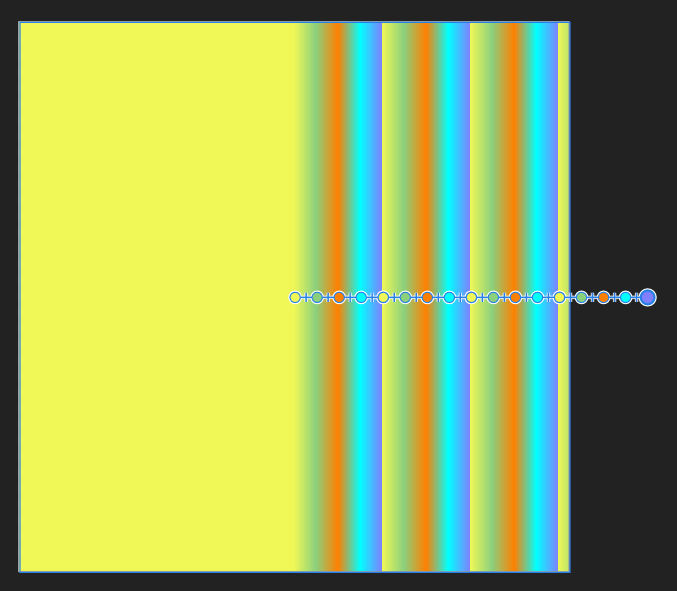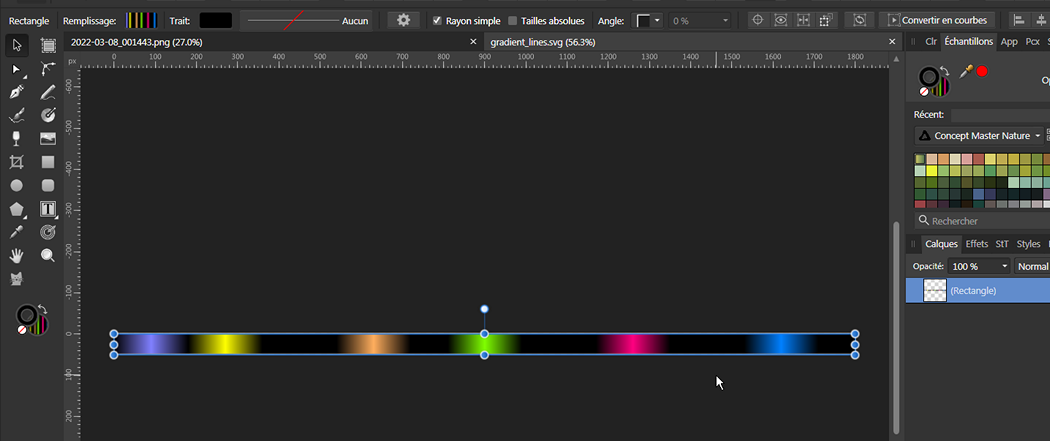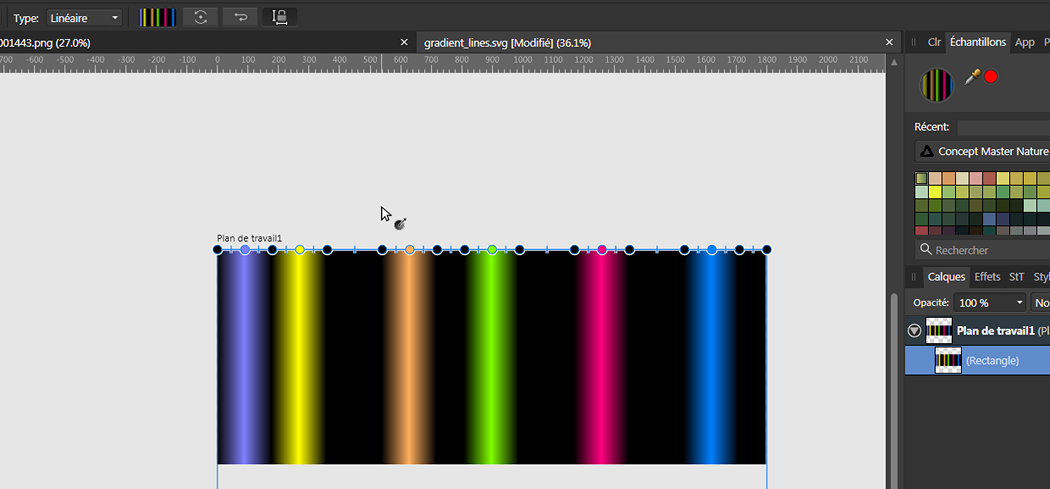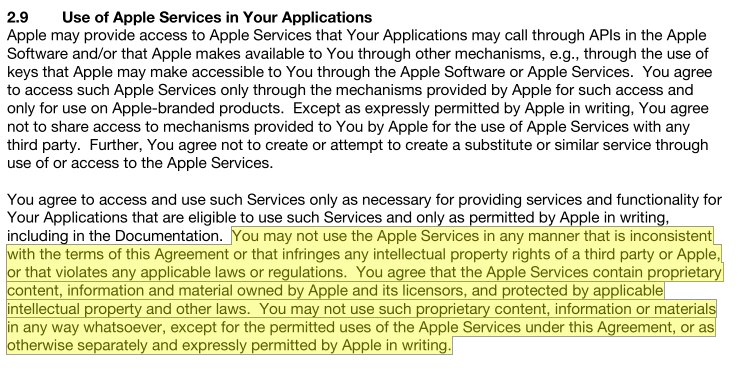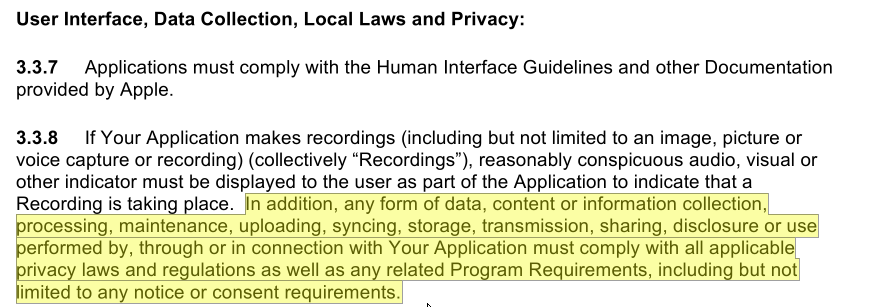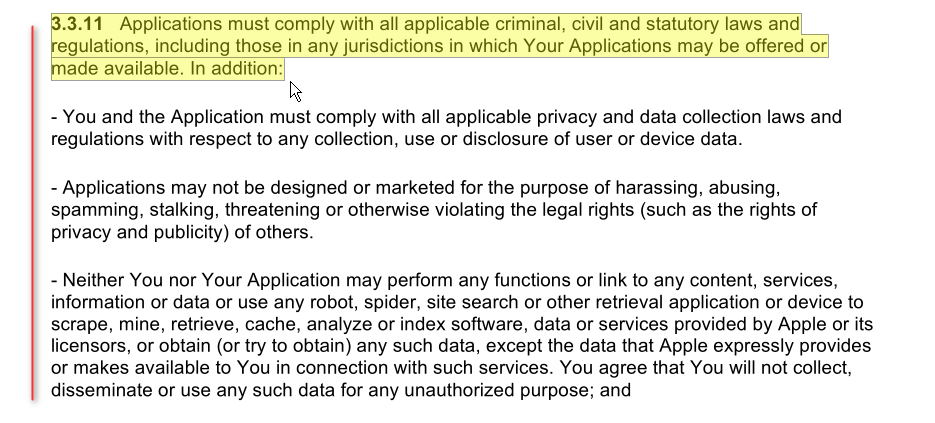-
Posts
4,130 -
Joined
-
Last visited
Everything posted by Wosven
-
I suppose the fact that by default the most used apps for layout everyone use like inDesign an QXPress, and taking few pics from magazines around me this early in the morning will show clean and nice layouts, don't prove anything... but it happens we find sometimes badly done jobs, and that how I'll qualify your example. (Notice in France we rarely use small caps in the first words, but when done, they would follow the way those examples are done).
-
Like you said, if I use artboards or pages, it's probably a document that won't fit well in AP, selecting part of of an artboard and trying to inverse the selection will add problems, etc. I won't have anymore the advantage to look at all the artboards side by side... If I just need a particular layer, I'll simply create it in another document and copy-paste it in the document open in the right app, or switch to AP and come back to the original app. Templates are usually more complexe than simple documents, that's why using them with the original apps seems more logical.
- 18 replies
-
- .aftemplate
- templates
-
(and 1 more)
Tagged with:
-
I agree with @RickyO (And I probably already mention this in this thread or another similar one.) Since we use a different app to create a template, it would be logical to use different extentions: there's no way I want to use a file crated in AD or APub in AP... 99.9% of the time I would open it in the original app, and switch to another one only if needed for a specific feature, as intend by the design of the apps. I certainly never order my files by extentions or type of app to open them. In the type of documents created with APub, for example, I would use other files created by other apps, but not put those in folders depending of the original app I used to create them. The logical way is to order folders by YEAR/CLIENT/TYPE OF DOCUMENT/DOCUMENT/files This way, it's easier to backup or archive files. It's also easier to archive/zip a folder and send it to someone, etc. To find template files, the apps will scan the appropriate folder. If this one is on a server — even with the best pro Internet connexion, full speed and bandwidth—, and has a lot of subfolder, it'll take some time for the app(s) to scan those folders and list the templates, so it's faster to go to the folder in the Finder/Explorer, and click on the file... ... and that's where/when/why specific extensions for templates depending of the app used to create them would be the best. Or we need to use old tricks llike more info in the file name + right-click to choose the app to open them...
- 18 replies
-
- .aftemplate
- templates
-
(and 1 more)
Tagged with:
-

how to get PANTONE color
Wosven replied to os design's topic in Pre-V2 Archive of Desktop Questions (macOS and Windows)
If you used a Pantone and added it to the swatches panel, you can read the Pantone name displaying the tint panel (or trying to rename the global colour). -

Downloadable Affinity keyboard shortcut cheat sheets
Wosven replied to Patrick Connor's topic in Resources
I think this is a little bir too strong for whar seems to be simply an help file... that I would translate as an "anti-sèche". When students don't have a flow of answers for a question, we say they are "dry", or they dry... "sécher". It's in the commun language, a little bit familiar, when not being able to answer, answer that need to be developped or that need a little bit of knowledge. So, we call cheat sheets "anti-sèche". Humorously, the few I did while student had me reading and sumarising the lessons, and memorising what I didn't wanted to learn. Using this in our adult life is more a "clin d'œil", (a wink, to denote humour), since we have a harder time to memorize shortcuts, and the humour is also in the fact that despite the name, we're allowed to "cheat" today using those files. -

2 sets of margins showing!
Wosven replied to Andrea Joy's topic in Pre-V2 Archive of Desktop Questions (macOS and Windows)
The problem comes mainly of having the margins the same blue as the text frame blue. If, as logical, the default color for margins was different from the start, (usually magenta), you wouldn't be confused. I put a request for this long ago, and it was in a different color at some point, but someone decided to use the same blue again, and it's confusing. -

Forum login shows PHP code
Wosven replied to TomAn's topic in Feedback for the V1 Affinity Suite of Products
It looks like Javascript, not PHP. -
It would be better if the app was able to use the last selected options for exporting this document. Perhaps you want "Current page" as default, but most of us 'd rather have "All pages" as default, instead of "All spread", since it's most usual. And if AD was also able to remember the last used options regarding Artboard, it would be nice.
-
@VeganPete Like you, if I design an object without contour/stroke, I don't expect one being added just by switching colours. It should be done by the designer, modifying the stroke's width, and not by the apps. Especially in AP, where foreground/background are difficult to differentiate, and you can easily disregard a 0 pt black stroke, and end up instead with a real stroke.
-

The Hidden Gradient Uploader …
Wosven replied to Dr_No's topic in Pre-V2 Archive of Desktop Questions (macOS and Windows)
A test file (it opens with some errors, but objects and gradients are present!): gradients.psd You can also import the GRD file in the online Photopea, apply them to shapes and export to SVG or save as PSD: You can either export as SVG or PSD from Photopea (if the SVG look wrong and like a simple fill, you can see in that there's a gradient): -

The Hidden Gradient Uploader …
Wosven replied to Dr_No's topic in Pre-V2 Archive of Desktop Questions (macOS and Windows)
For long, you can add a shape/path in PS, and color it with a gradient. It's what I uses long ago to redo logo in vector objects (I was never fond of AI and avoided using it). Since QXP was perfectly able to read those pathes only files, and use them as we would PDF vectors, it was a nice trick. (Sadly, ID was lacking when using those same files...) But today, you have "smart objects" or "shapes" layers in PS, and if using them is more a pain and I regret the good old ones, you should be able to use them, apply a gradient on them and open the file in AP to retrieve the gradients. -
It's nice of you to try to help, you can test the file if you want: for example, just add a background color in a cell style and hit "OK": tests.afpub I needed the same style in the different files with the apps shortcuts, since I wanted to translate them in French. That's why there's this file with all the needed tables I simply needed to have the same style in the original files, anddo some modifications at some points. It keeps on crashing the 1.10.5.1282 beta version, but not the recent 1.105.1342 release available recently.
-
For those who found it useful, another version of the Gradient editor, with added features: position for the stops transparency repetition of the gradient SVG_gradient_editor_v5.zip
- 53 replies
-
- affinity designer
- gradient tool
-
(and 2 more)
Tagged with:
-
Of course. Each one of us have different worflow, but some will use more some features than other. For the ones that create complexe gradients, being able to modify them in a larger panel is important. For those who have a huge collection of gradients swatch, and need to use them on object or in gradients map, being able to pick gradient swacthes when using the gradient map is important,etc. I suppose that people asking for features need them more than once. We can always use tricks, but if there a simpler and logical way to do things, that's always better.
- 53 replies
-
- affinity designer
- gradient tool
-
(and 2 more)
Tagged with:
-
No. Sadly. It's a feature asked for: ...
- 53 replies
-
- affinity designer
- gradient tool
-
(and 2 more)
Tagged with:
-
I don't know what type of gradients you need, but I had fun doing this page that can produce simple SVG with linear of radial gradients. The stops are equaly distanced, and you can only create stops, modify their color, of create them from a list of colors in hexadecimal values (#ffffff). Once exported to SVG, it's easy to open in AD to save as gradient (after resizing the gradient, since it's always larger than the CSS one...) SVG_gradient_editor_v5.zip SVG_gradient_editor.zip
- 53 replies
-
- affinity designer
- gradient tool
-
(and 2 more)
Tagged with:
-
It reminds me of old days, when we all had a "Catalogue Letraset" to identify and choose a font, or did our own depending of the ones available. Did you use the default leading and kerning of each fonts?
-

Fonts allowed in a packaged file
Wosven replied to kenmcd's topic in Pre-V2 Archive of Desktop Questions (macOS and Windows)
About images, I already answered about usual copyrights, and they usually permit a buyer to provide the file to the studio/agency that'll do the DTP or web site, etc. depending of the final use. Some contracts will allow the agency to be proxy to buy them and include the price in the invoices, some clients will use their own account to buy them. In all case, you can usually get low resolution and watermarked files to present a selection to choose from. But this doesn't apply to fonts. If you can see fewwords in a font before buying it, you won't be allowed to du a full documents simply to test how it looks like, unless you use a cloud fonts service. The problem is different, since usually development tools EULA ask to stay in Compliance to the law and with third party softwares. Example for Microsoft and Visual Studio: For Apple Xcode: https://www.apple.com/legal/sla/docs/xcode.pdf and https://developer.apple.com/programs/information/Apple_Developer_Program_Information_8_12_15.pdf It seems — I'm not a specialist at reading legal jargon — you can't use the API if they infrige any intellectual property rights. There's other interesting paragraphs, in those documents. Here an interesting answer about fonts license: "the license rights are specified in the agreement that is signed when a font is acquired, and its conditions are binding." That's why, from the start of the previous discussion leading to this thread, we're asking for a different way to handle the packaging of the fonts, and be allowed to disabled the cloud fonts, or any fonts we don't want to be packaged, for various reasons, since the way it's done today, prevent us to abid by the EULA we agreed on (or, in a corporate envirronment, the possible agrement you had to sign when delivered the computer you will use for working). If they didn't know, and didn't checked the feature with such service activated, now they can't deny it's against the EULA users agreed using cloud fonts, or the EULA they agreed for using developement tools (if they are the same). And they need to modify the apps, since it's always better to help users, even those using cloud fonts, than keeping features that add problems. -

Fonts allowed in a packaged file
Wosven replied to kenmcd's topic in Pre-V2 Archive of Desktop Questions (macOS and Windows)
But as we say all along: the apps do the copy without us knowing (unless we read this forum and those threads), and, if aware, without the possibility to choose the fonts we want to copy when we need this feature for archiving. And if you read the EULA of a Windows development tool like Visual Studio: I'm not a lawyer, but it seems even in the development process, you need to respect the EULA of the fonts. And: We can supose that any development tool used to create the apps have similar EULA, asking to respect fonts and other previously agreed upon EULA. In the test stage of the apps, they shouldn't have permit to copy the Cloud fonts, and by extend, shouldn't permit to do it on other computers. -

Fonts allowed in a packaged file
Wosven replied to kenmcd's topic in Pre-V2 Archive of Desktop Questions (macOS and Windows)
No, it is you who is missing the point. If I have a copyright that automatically prevents somebody else from having that right. So if somebody takes one of my copyright photos, puts it in Photoshop, exports it again (perhaps stripping out my copyright information), they have now infringed my copyright. What happens if somebody has not bought my image? Why are apps allowed to export my photos, with my copyright information stripped out? Isn't this what this thread is about - the supposed bad behaviour of Affinity apps for accessing and doing things with fonts which is supposedly not allowed? Whether that is a problem or not is hardly the main issue, if you are ignoring the generalised problem of copying files at all. This is different since the act of copying the picture is a conscious action. For example, if the picture was on a web site, you need to right-click or to save it, or it'll only appear in the browser's cache, not be directly available. When you're packaging for archiving or sending a document for a coworker, you need to archive part of the fonts you're allowed to copy. For now, the apps can't permit to choose only those ones. It need to be improved. "Why are apps allowed to export my photos, with my copyright information stripped out?" There's differents problems here. I think I encountered protected photos you couldn't modify, but I don't have any clue how it was done. (Since usually I simply want to add the copyright infos in the necessary field to be automatically read in ID... I simply do it manually in ID and do the next task). Some CMS will automatically strip images of metadata... for protection, deleting the personal data. But it's particulary annoying since it's also stripping copyrights infos. There's certainly improvement to do to protect images' copyrights, but also to allow people in the DTP or web industry to do their work on those images if needed. -
Did you tried disabling hardware acceleration? Perhaps you did it on the other compuer and forget to do it.




